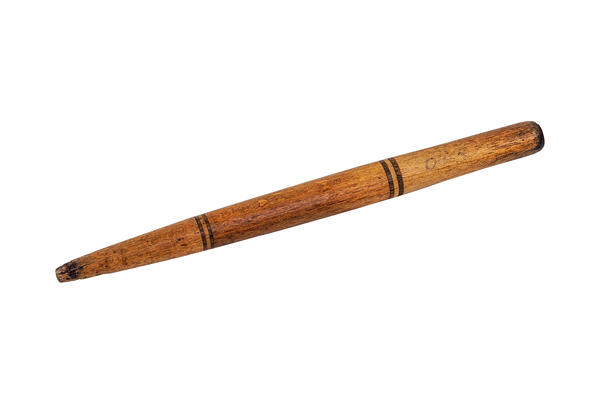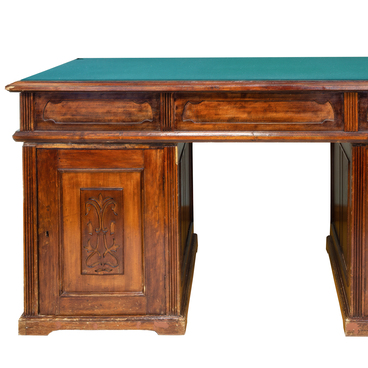The collection of the museum contains a dip pen of the poet Majit Gafuri, which he used while working on his compositions. Over time, it cracked and fell into disrepair, but remained as part of the museum’s memorial exhibit in Gafuri’s study.
Humanity has been using quills for writing for at least a thousand years. Historians believe that the first goose-quill appeared in Seville, a region of Spain, around 600 A.D. and was in demand until the end of the 18th century. At that time, the bird’s feather was replaced by a steel nib. Metal writing instrument turned out to be much more practical. Its high price was compensated by long life and convenience of use.
Many scholars agree that German Johannes Janssen invented the first steel nib in 1748. However, according to another version, this device appeared in England in 1803. It is supported by the fact that the first mass production of steel nibs began in the English city of Birmingham. In 1822, brothers John and William Mitchell opened a factory in this city. The Romanian inventor Petras Poynaru received the patent for the first automatic fountain pen in 1827. He invented it when he was a student in Paris and patented it as ‘Endless portable pen with automatic ink supply’.
However, goose quills continued to be used until 1830, because the quality of metal products remained very poor. It was not until about 1850, twenty years later those pens made of metal were used more often. During this period, they became firmly established in people’s daily lives. From the 1880s, the era of their mass production began, and by the end of the century they had completely replaced goose quills.
Initially, nibs were made of gold or stainless steel. But because they wore out quickly, the nibs were soon made of harder metals, usually iridium and rhodium. The bodies of the first fountain pens were ebonite, but after the invention of celluloid, they were increasingly made of plastic.
Humanity has been using quills for writing for at least a thousand years. Historians believe that the first goose-quill appeared in Seville, a region of Spain, around 600 A.D. and was in demand until the end of the 18th century. At that time, the bird’s feather was replaced by a steel nib. Metal writing instrument turned out to be much more practical. Its high price was compensated by long life and convenience of use.
Many scholars agree that German Johannes Janssen invented the first steel nib in 1748. However, according to another version, this device appeared in England in 1803. It is supported by the fact that the first mass production of steel nibs began in the English city of Birmingham. In 1822, brothers John and William Mitchell opened a factory in this city. The Romanian inventor Petras Poynaru received the patent for the first automatic fountain pen in 1827. He invented it when he was a student in Paris and patented it as ‘Endless portable pen with automatic ink supply’.
However, goose quills continued to be used until 1830, because the quality of metal products remained very poor. It was not until about 1850, twenty years later those pens made of metal were used more often. During this period, they became firmly established in people’s daily lives. From the 1880s, the era of their mass production began, and by the end of the century they had completely replaced goose quills.
Initially, nibs were made of gold or stainless steel. But because they wore out quickly, the nibs were soon made of harder metals, usually iridium and rhodium. The bodies of the first fountain pens were ebonite, but after the invention of celluloid, they were increasingly made of plastic.



